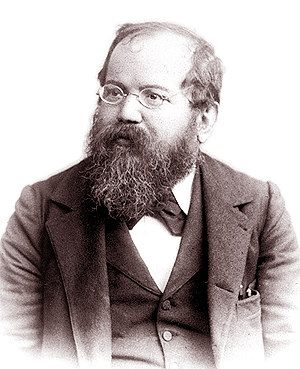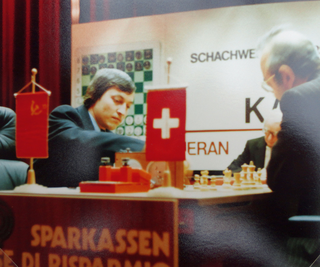The Giuoco Piano is a chess opening beginning with the moves:
The Philidor Defence is a chess opening characterised by the moves:
The Vienna Game is an opening in chess that begins with the moves:
The Scotch Game, or Scotch Opening, is a chess opening that begins with the moves:
The Dunst Opening is a chess opening in which White opens with the move:
Tarrasch Trap refers to two different chess opening traps in the Ruy Lopez that are named for Siegbert Tarrasch. Unlike many variations that appear only in analysis, Tarrasch actually sprung his traps against masters in tournament games.
An Open Game is a generic term for a family of chess openings beginning with the moves:

The World Chess Championship 1886 was the first official World Chess Championship match contested by Wilhelm Steinitz and Johannes Zukertort. The match took place in the United States from 11 January to 29 March, the first five games being played in New York City, the next four being played in St. Louis and the final eleven in New Orleans. The winner was the first player to achieve ten wins. Wilhelm Steinitz won the match 10–5, winning his tenth game in the twentieth game of the match. There were five draws.

The second World Chess Championship was held in Havana, Cuba in 1889. Defending champion Wilhelm Steinitz beat challenger Mikhail Chigorin with a score of 10½ -6½.
A Steinitz Variation is any of several chess openings introduced and practiced, or adopted and advocated by Wilhelm Steinitz, the first officially recognized World Chess Champion.

The third World Chess Championship was held in New York City from 9 December 1890 to 22 January 1891. Holder Wilhelm Steinitz narrowly defeated his Hungarian challenger, Isidor Gunsberg.

Napoleon Marache was a chess player, problem composer, and journalist. He was born in France and moved to the United States at around 12 years of age. He learned the game of chess around 1844, and immediately became a devotee. He began composing chess problems and writing about chess the following year. In the mid-19th century, he was both one of America's first chess journalists and one of its leading players. In 1866, he published Marache's Manual of Chess, which was one of the country's first books on chess, and also one of its first books on backgammon. He is perhaps best known today for having lost a famous game to Paul Morphy.

A World Chess Championship was played between challenger Max Euwe and title-holder Alexander Alekhine in various cities and towns in the Netherlands from 3 October to 16 December 1935. Euwe was the winner by overcoming a three-point deficit as late as the ninth game.

The 1978 World Chess Championship was played between Anatoly Karpov and Viktor Korchnoi in Baguio, Philippines, from July 18 to October 18, 1978. Karpov won, thereby retaining the title.

The 1981 World Chess Championship was played between Anatoly Karpov and Viktor Korchnoi in Merano, Italy from October 1 to November 19, 1981. Karpov won with six wins against two, with 10 draws. The two players had already played against each other in the World Chess Championship match 1978 in the Philippines, when Karpov also won.

The World Chess Championship 2016 was a chess match between the reigning world champion Magnus Carlsen and the challenger Sergey Karjakin to determine the World Chess Champion. Carlsen had been world champion since 2013, while Karjakin qualified as challenger by winning the 2016 Candidates Tournament. The best-of-12 match, organized by FIDE and its commercial partner Agon, was played in New York City between 10 and 30 November 2016.






